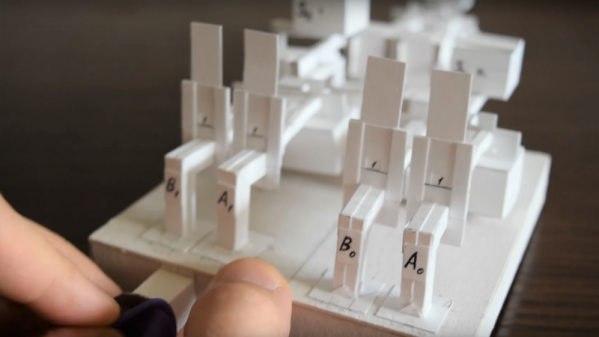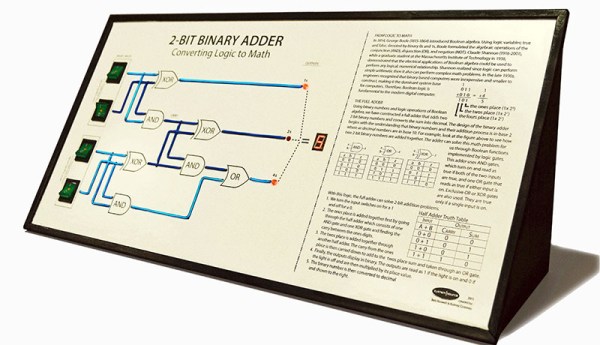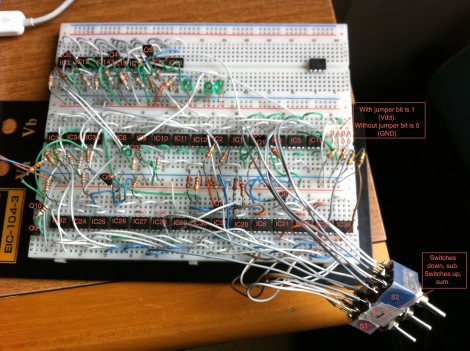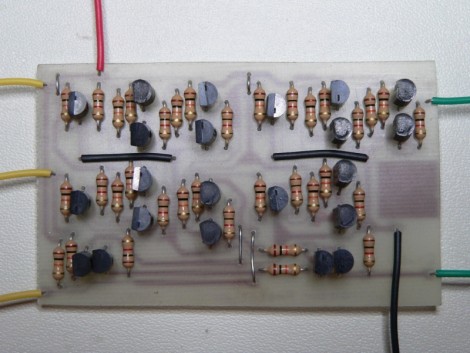Most of us can do simple math in our heads, but some people just can’t seem to add two numbers between 0 and 3 without using paper, like [Aliaksei Zholner] does with his fluidic adder circuit built completely of paper.

There’s some good detail in [Aliaksei]’s translated post on the “Only Paper” forum, a Russian site devoted to incredibly detailed models created entirely from paper. [Aliaksei] starts with the basic building blocks of logic circuits, the AND and OR gates. Outputs are determined by the position of double-headed pistons in chambers, with output states indicated by pistons that raise a flag when pressurized. The adder looks complicated, but it really is just a half-adder and full-adder piped together in exactly the same way it would be wired up with CMOS or TTL gates. The video below shows it in action.
If [Aliaksei]’s name seems familiar, it’s because we’ve featured his paper creations before, including this working organ and a tiny working single cylinder engine. We’re pleased with his foray into the digital world, and we’re looking forward to whatever is next.
Continue reading “Paper Circuit Does Binary Math With Compressed Air”















